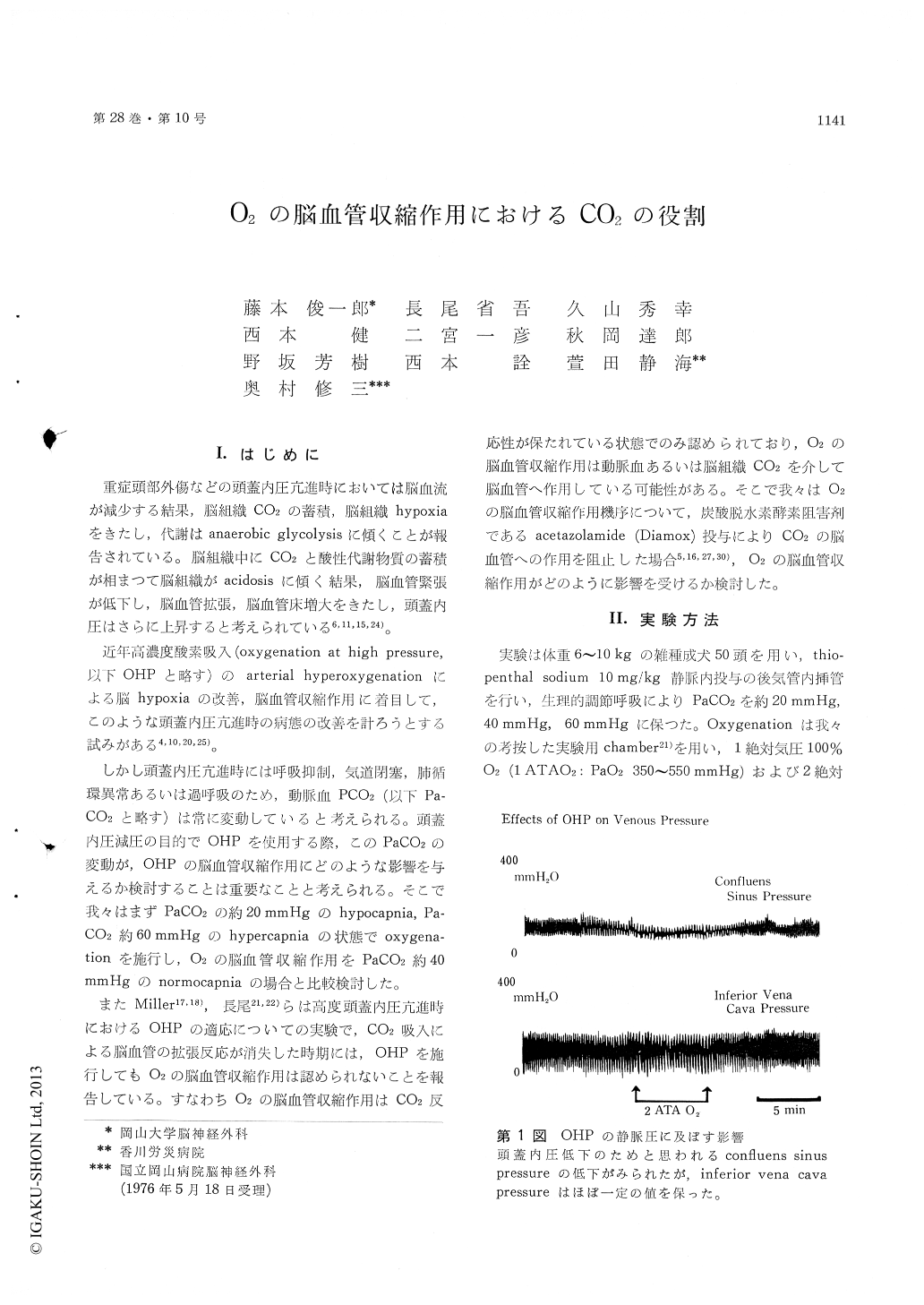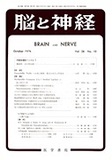Japanese
English
- 有料閲覧
- Abstract 文献概要
- 1ページ目 Look Inside
I.はじめに
重症頭部外傷などの頭蓋内圧亢進時においては脳血流が減少する結果,脳組織CO2の蓄積,脳組織hypoxiaをきたし,代謝はanaerobic glycolysisに傾くことが報告されている。脳組織中にCO2と酸性代謝物質の蓄積が相まつて脳組織がacidosisに傾く結果,脳血管緊張が低下し,脳血管拡張,脳血管床増大をきたし,頭蓋内圧はさらに上昇すると考えられている6,11,15,24)。
近年高濃度酸素吸入(oxygenation at high pressure, 以下OHPと略す)のarterial hyperoxygenationによる脳hypoxiaの改善,脳血管収縮作用に着目して,このような頭蓋内圧亢進時の病態の改善を計ろうとする試みがある4,10,20,25)。
50 mongrel adult dogs were used to study the influence of CO2 on cerebral vasoconstricting effect of O2. Oxygenation was performed at 1 ATA O2 and 2 ATA O2. Responses of the cerebral vascular bed to oxygenation were assessed by changes of CSF pressure which was measured in the cisterna magna.
In order to study the influence of arterial CO2 on the cerebral vasoconstricting effect of O2, PaCO2 was maintained at 20, 40 and 60mmHg respectively, at which level oxygenations were performed. And changes of CSF pressure during oxygenation were compared with each other.
In another study, prior to oxygenation, acetazo-lamide 50mg/kg was intravenously injected to in-hibit the effect of arterial and brain tissue CO2 on the cerebrovascular bed, and then the changes of CSF pressure were compared between in acetazo-lamide treated and untreated group.
Results were as follows:
1. The cerebral vasoconstricting effect of O2 was the greatest at PaCO2 40 mmHg (normocapnia), moderate at PaCO2 60 mmHg (hypercapnia) and slight in degree at PaCO2 20mmHg (hypocapnia).
This study demonstrated that vasoconstricting effect of O2 in various degrees of intracranial hypertension was maximal in normocapnia but diminished in pathological conditions such as hyper-capnia and paticularly in hypocapnia.
2. CSF pressure was definitely lowered by oxy-genation in the group treated with acetazolamide which inhibits the effect of CO2 on the cerebral vessels as untreated group.
Concerning the mechanism of action of O2, this result indicates that O2 has a vasoconstricting effect by acting directly on the cerebral vascular smooth muscle, independently of arterial and brain tissue CO2.

Copyright © 1976, Igaku-Shoin Ltd. All rights reserved.


